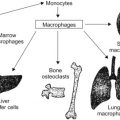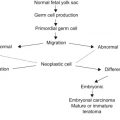Abstract
Anemia during the neonatal period is caused by: (i) Hemorrhage : acute or chronic, (ii) Hemolysis : congenital hemolytic anemias or due to isoimmunisation, and (iii) Failure of red cell production : inherited bone marrow failure syndromes, for example, Diamond–Blackfan anemia (pure red cell aplasia).
Keywords
prenatal blood loss, twin-to-twin transfusion, infantile pyknocytosis, Rh isoimmunization, Rh immunoglobulin, ABO isoimmunization, vitamin E deficiency, anemia of prematurity, physiologic anemia
Anemia during the neonatal period is caused by:
- •
Hemorrhage : acute or chronic.
- •
Hemolysis : congenital hemolytic anemias or due to isoimmunization.
- •
Failure of red cell production : inherited bone marrow failure syndromes, for example, Diamond–Blackfan anemia (pure red cell aplasia).
Table 5.1 lists the causes of anemia in the newborn.
|
a Not permanent membrane defect but has characteristic morphology.
b β-Chain mutations (e.g., sickle cell) uncommonly produce clinical symptomatology in the newborn. In homozygous sickle cell disease, the HbS concentration at birth is usually about 20%.
c All these conditions can be associated with Heinz-body formation and in the past were grouped together as congenital Heinz-body anemia.
d β-Thalassemia syndromes only become clinically apparent after 2 or 3 months of age. The first sign is the presence of nucleated red cells on smear or continued high HgbF concentration.
e Hemolysis subsides after the first few months of life as fetal hemoglobin (α 2 γ 2 ) is replaced by adult hemoglobin (α 2 β 2 ).
Hemorrhage
Blood loss may occur during the prenatal, intranatal, or postnatal periods. Prenatal blood loss may be transplacental, intraplacental, or retroplacental or may be due to a twin-to-twin transfusion.
Prenatal Blood Loss
Transplacental Fetomaternal
In 50% of pregnancies fetal cells can be demonstrated in the maternal circulation, in 8% the transfer of blood is estimated to be between 0.5 and 40 ml and in 1% of cases exceeds 40 ml and is of sufficient magnitude to produce anemia in the infant. Transplacental blood loss may be acute or chronic. Table 5.2 lists the characteristics of acute and chronic blood loss in the newborn. It may be secondary to procedures such as diagnostic amniocentesis or external cephalic version. Fetomaternal hemorrhage is diagnosed by demonstrating fetal red cells by the acid-elution method of staining for fetal hemoglobin (Kleihauer–Betke technique) in the maternal circulation. Diagnosis of fetomaternal hemorrhage may be missed in situations in which red cells of the mother and infant have incompatible ABO blood groups. In such instances the infant’s A- and B-cells are rapidly cleared from the maternal circulation by maternal anti-A or anti-B antibodies. In these cases an increase in maternal immune anti-A anti-B titers in the weeks after delivery may be helpful. The optimal timing for demonstrating fetal cells in maternal blood is within 2 h of delivery and no later than the first 24 h following delivery. This technique cannot be relied upon when maternal fetal hemoglobin is raised for other reasons such as:
- 1.
Maternal thalassemia minor.
- 2.
Maternal sickle cell anemia.
- 3.
Hereditary persistence of fetal hemoglobin.
- 4.
Some normal women have a pregnancy-induced increase in fetal hemoglobin.
| Characteristic | Acute blood loss | Chronic blood loss |
|---|---|---|
| Clinical | ||
| Acute distress; pallor; shallow, rapid and often irregular respiration; tachycardia; weak or absent peripheral pulses; low or absent blood pressure; no hepatosplenomegaly | Marked pallor disproportionate to evidence of distress. On occasion signs of congestive heart failure may be present, including hepatomegaly | |
| Venous pressure | Low | Normal or elevated |
| Laboratory | ||
| Hemoglobin concentration | May be normal initially; then drops quickly during the first 24 h of life | Low at birth |
| Red cell morphology | Normochromic and macrocytic | Hypochromic and microcytic anisocytosis and poikilocytosis |
| Serum iron | Normal at birth | Low at birth |
| Course | Prompt treatment of anemia and shock necessary to prevent death | Generally uneventful |
| Treatment | Normal saline bolus or packed red blood cells. If indicated, iron therapy | Iron therapy. Packed red blood cells on occasion |
In the presence of these conditions other techniques based on differential agglutination have to be employed.
Intraplacental and Retroplacental
Occasionally, fetal blood accumulates in the substance of the placenta (intraplacental) or retroplacentally and the infant is born anemic. Intraplacental blood loss from the fetus may occur when there is a tight umbilical cord around the neck or body or there is delayed cord clamping. Retroplacental bleeding from abruptio placenta is diagnosed by ultrasound or at surgery.
Twin-to-Twin Transfusion
Significant twin-to-twin transfusion occurs in at least 15% of monochorionic twins. Velamentous cord insertions are associated with increased risk of twin-to-twin transfusion. The hemoglobin level differs by 5 g/dl and the hematocrit by 15% or more between individual twins (by contrast, the maximal discrepancy in cord blood hemoglobin in dizogotic twins is 3.3 g/dl). The donor twin is anemic, pale and smaller, and may have evidence of oligohydramnios and show evidence of congestive heart failure and shock. The recipient is polycythemic and larger, with evidence of polyhydramnios and may show signs of hyperviscosity syndrome—hypoglycemia, central nervous system injury, hypocalcemia; disseminated intravascular coagulation, hyperbilirubinemia, and congestive heart failure ( Chapter 12 ).
Intranatal Blood Loss
Hemorrhage may occur during the process of birth as a result of various obstetric accidents, malformations of the umbilical cord or the placenta, or a hemorrhagic diathesis (due to a plasma factor deficiency or thrombocytopenia; Table 5.1 ).
Postnatal Blood Loss
Postnatal hemorrhage may occur from a number of sites and may be internal (enclosed) or external.
Hemorrhage may be due to:
- •
Traumatic deliveries (resulting in intracranial or intra-abdominal hemorrhage).
- •
Plasma factor deficiencies (see Chapter 15 ).
- •
Congenital—hemophilia or other plasma factor deficiencies.
- •
Acquired—vitamin K deficiency, disseminated intravascular coagulation.
- •
- •
Thrombocytopenia (see Chapter 14 )
- •
Congenital—Wiskott–Aldrich syndrome, Fanconi anemia, thrombocytopenia absent radius syndrome.
- •
Acquired—isoimmune thrombocytopenia, sepsis.
- •
Rare causes—neonatal adenovirus infection, fetal cytomegalovirus infection, hemangiomas of the gastrointestinal tract, hemangioendotheliomas of the skin.
- •
When the products of hemoglobin are absorbed from entrapped hemorrhage, hyperbilirubinemia may develop after several days.
Clinical and Laboratory Findings of Anemia due to Hemorrhage
The clinical manifestations of hemorrhage depend on the volume of the hemorrhage and the rapidity with which it occurs.
- 1.
Anemia—pallor, tachycardia, and hypotension (if severe e.g., ≥20 ml/kg blood loss). Nonimmune hydrops can occur in severe anemia.
- 2.
Liver and spleen not enlarged (except in chronic transplacental bleed).
- 3.
Jaundice absent (except after several days in entrapped hemorrhage).
- 4.
Laboratory findings:
- a.
Reduced hemoglobin (as low as 2 g/dl has been observed).
- b.
Increased reticulocyte count.
- c.
Polychromatophilia.
- d.
Nucleated RBCs raised.
- e.
Fetal cells in maternal blood (in fetomaternal bleed).
- f.
Direct antiglobulin test negative.
- a.
Treatment
- 1.
Severely affected.
- a.
Administer 10–20 ml/kg packed red blood cells (hematocrit usually 50–60%) via an umbilical vein catheter.
- b.
Cross-match blood with the mother. If unavailable, use group O Rh-negative blood or saline boluses, temporarily for shock, while awaiting available blood.
- c.
Use partial exchange transfusion with packed red cells for infants in incipient heart failure.
- a.
- 2.
Mild anemia due to chronic blood loss.
- a.
Ferrous sulfate (2 mg elemental iron/kg body weight three times a day) for 3 months.
- a.
Hemolytic Anemia
Hemolytic anemia in the newborn is usually associated with an abnormally low hemoglobin level, an increase in the reticulocyte count, and with unconjugated hyperbilirubinemia. The hemolytic process is often first detected as a result of investigation for jaundice during the first week of life. The causes of hemolytic anemia in the newborn are listed in Table 5.1 .
Congenital Erythrocyte Defects
Congenital erythrocyte defects involving the red cell membrane, hemoglobin, and enzymes are listed in Table 5.1 and discussed in Chapter 10 , Chapter 11 . Any of these conditions may occur in the newborn and manifest clinically as follows:
- •
Hemolytic anemia (low hemoglobin, reticulocytosis, increased nucleated red cells, morphologic changes).
- •
Unconjugated hyperbilirubinemia.
- •
Direct antiglobulin test negative.
Infantile Pyknocytosis
The cause of this condition has not been clearly defined and should only be contemplated when other established causes of pyknocytes in the blood have been excluded such as glucose-6-phosphate dehydrogenase (G6PD) deficiency, pyruvate kinase deficiency, microangiopathic hemolytic anemia, neonatal hepatitis, vitamin E deficiency, neonatal infections, and hemolysis caused by drugs and toxic agents. Infantile pyknocytosis is characterized by:
- •
Hemolytic anemia—Direct antiglobulin test negative (nonimmune).
- •
Distortion of as many as 50% of red cells with several to many spiny projections (up to 6% of cells may be distorted in normal infants). Abnormal morphology is extracorpuscular in origin.
- •
Disappearance of pyknocytes and hemolysis by the age of 6 months. This is a self-limiting condition.
- •
Hepatosplenomegaly.
Anemia due to Hemoglobinopathies
Certain hereditary defects of hemoglobin occur in the newborn. Defects due to gamma chain defects resolve spontaneously whereas defects of beta chain disorders are clinically inapparent at birth and only occur at a later age. Defects of the alpha chain manifest clinically differently in the newborn when they are paired with the gamma rather than the beta chain of hemoglobin.
Gamma Chain Defects
These variants spontaneously resolve as gamma chain production diminishes in the newborn and generally produce no hematologic disturbance. The condition would be lethal if no gamma chains were produced in utero . If only one or two genes are involved slight hypochromia and mild anemia may occur and the condition is usually found during newborn screening programs.
Beta Chain Defects
Beta chain defects generally produce no clinical symptomatology in the newborn. However, homozygous hemoglobin S, the most common beta chain variant, may rarely present in the newborn as a hemolytic anemia. In beta thalassemia syndromes hematologic findings at birth are normal and only manifest later, typically in the first 6 months of life.
Alpha Chain Defects
A large spectrum of alpha-thalassemia syndromes occur in the newborn and they are discussed in the chapter on hemoglobinopathies ( Chapter 11 ).
Acquired Erythrocyte Defects
Acquired erythrocyte defects may be due to immune (direct antiglobulin test-positive) or nonimmune (direct antiglobulin test-negative) causes. The immune causes are due to blood group incompatibility between the fetus and the mother, for example, Rh (D), ABO, or minor blood group incompatibilities such as anti-c, Kell, Duffy, Luther, anti-C, anti-Cw, anti-E, and anti-Jk(b) causing isoimmunization. Kell antigen is second to Rh (D) in its immunizing potential and occurs in about 9% of Whites and 2% of Blacks.
Immune Hemolytic Anemia
Rh Isoimmunization
Clinical Features
- 1.
Anemia, mild to severe (if severe, may be associated with hydrops fetalis 1
1 Infants have ascites, pleural and pericardial effusions and marked edema. Pathogenesis of hydrops may be due to heart failure, hypoalbuminemia, distortion and dysfunction of hepatic architecture and circulation due to islets of extramedullary erythropoiesis.
).
- 2.
Jaundice (unconjugated hyperbilirubinemia).
- a.
Presents during first 24 h.
- b.
Kernicterus may occur whenever the bilirubin level in full-term infants rises to, or exceeds, 20 mg/dl and is an indication for exchange transfusion.
Certain factors predispose to the development of kernicterus at lower levels of bilirubin, such as prematurity, hypoproteinemia, metabolic acidosis, drugs (sulfonamides, caffeine, sodium benzoate), and hypoglycemia. When these conditions are present exchange transfusions should be performed even if the bilirubin level is below 20 mg/dl.
See Table 5.3 for a list of various causes of unconjugated hyperbilirubinemia. Figure 5.1 outlines an approach to the diagnosis of both unconjugated and conjugated hyperbilirubinemia.
- a.






